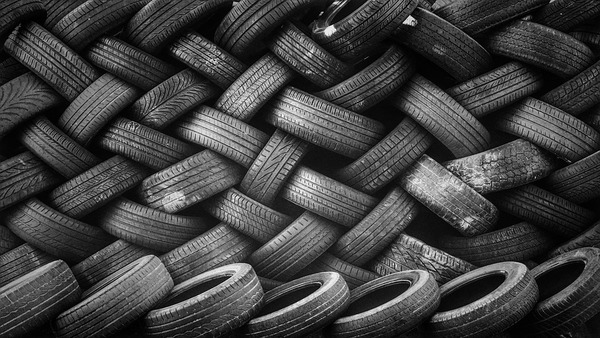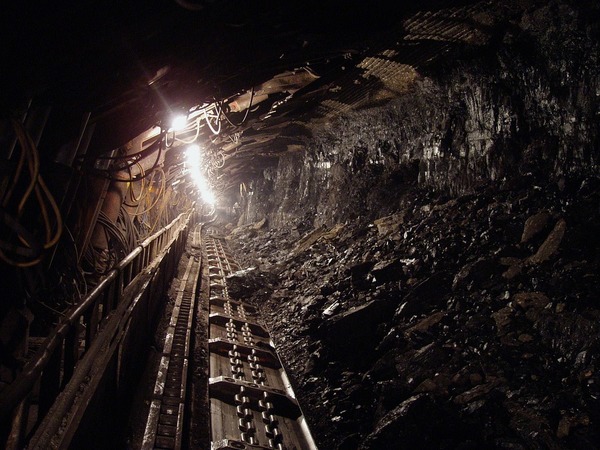Just In
- 9 hrs ago

- 10 hrs ago

- 13 hrs ago

- 13 hrs ago

Don't Miss
- Movies
 Arti Singh-Dipak Chauhan Wedding: Priyanka Chahar Choudhary-Ankit Gupta Steal Show With Their Stunning Looks
Arti Singh-Dipak Chauhan Wedding: Priyanka Chahar Choudhary-Ankit Gupta Steal Show With Their Stunning Looks - News
 MEA Dismisses US Human Rights Report On Manipur As 'Biased And Misinformed'
MEA Dismisses US Human Rights Report On Manipur As 'Biased And Misinformed' - Finance
 1:5 & 1:2 Split, Rs 6/Sh Dividend: Fertilizer Stock Coming Up With 600% Payout; Record, Payment Dates Fixed
1:5 & 1:2 Split, Rs 6/Sh Dividend: Fertilizer Stock Coming Up With 600% Payout; Record, Payment Dates Fixed - Sports
 SRH vs RCB: 'Statpadder' Virat Kohli faces Fans Wrath after 118.3 Strike Rate
SRH vs RCB: 'Statpadder' Virat Kohli faces Fans Wrath after 118.3 Strike Rate - Automobiles
 Royal Enfield Unveils Revolutionary Rentals & Tours Service: Check Out All Details Here
Royal Enfield Unveils Revolutionary Rentals & Tours Service: Check Out All Details Here - Technology
 Elon Musk’s X Is Launching a TV App Similar to YouTube for Watching Videos
Elon Musk’s X Is Launching a TV App Similar to YouTube for Watching Videos - Education
 AICTE introduces career portal for 3 million students, offering fully-sponsored trip to Silicon Valley
AICTE introduces career portal for 3 million students, offering fully-sponsored trip to Silicon Valley - Travel
 Escape to Kalimpong, Gangtok, and Darjeeling with IRCTC's Tour Package; Check Itinerary
Escape to Kalimpong, Gangtok, and Darjeeling with IRCTC's Tour Package; Check Itinerary
World Cancer Day 2021: 10 Jobs That Increase Your Risk Of Cancer
World Cancer Day is observed every year on 4 February. It is a global uniting initiative led by the Union for International Cancer Control (UICC). The theme for World Cancer Day 2021 is I Am and I Will.
World Cancer Day was established on 4 February 2000 at the World Cancer Summit Against Cancer for the New Millenium. In 2016, World Cancer Day initiated a three-year campaign under the tagline of 'We can. I can.', which explored the power of collective and individual actions to reduce the impact of cancer. At least 60 governments officially observe World Cancer Day.
Can your workplace cause health problems? Yes. According to the American Cancer Society reports, your workplace can cause you cancer. People working in certain professions, such as flight attendants, are more likely to develop health problems such as skin and breast cancer when compared to those working in other occupations.
Like every year, this year too World Cancer Day will be celebrated on 4 February.

The exposure to different kinds of radiation and chemicals exposure to too much sunlight or disruption in circadian rhythms affect your health adversely, thereby increasing your risks of developing cancer [1] .
Read on to know the different types of job that increase your risk of cancer.
Jobs That Increase Your Risk Of Cancer
1. Construction workers
One of the most common types of cancer affecting construction workers is skin cancer. Being exposed to long hours of sunlight can damage their skin and increase the risk of cancer. Mesothelioma, a cancer of the lung is the other type of cancer risk affecting the construction workers. Caused due to asbestos inhalation, it is commonly reported in industrial workers dealing with asbestos [2] .
2. Rubber manufacturers
Exposed to chemicals, chemical vapours, dust and other by-products, workers in rubber manufacturing have the risk of developing stomach, lung and bladder cancers. According to the reports developed by Center for Disease Control and Prevention, people working in this industry are also prone to leukaemias and lymphomas as well. This is due to the absorption of carcinogens through the skin that affects the individual on the cellular level [3] .

3. Recycling workers
The cheap and disposable electronics of the new world are a boon to your pockets but these are extremely hazardous to one's health. Recycling works require individuals to crack open electronics and other hazardous materials, making them exposed to heavy metal toxicity. This continuous exposure to these heavy metals increases your risk of kidney, liver, lung and nasal cancer [4] .
4. Farmers
According to a study conducted on exploring the impact farming had on increasing the risks of developing cancer in women, it was ascertained that women working in agriculture had a 35% higher risk than someone not working in agriculture. Also, the prevalence of lung cancer due to the overexposure to engine exhaust, pesticides, fertilizers, and other chemical elements increase the risk of lymphomas, leukaemias, and several other cancers[5] .
5. Hairstylists
According to the National Cancer Institute, the individuals working in the hair industry are overexposed to the chemicals found in hair colours and dyes. This, in the long run, can lead towards cancers of the bladder, larynx and lungs [6] .

6. Mechanics
Exposed to various types of carcinogens, people working with car engines and parts are prone to the risk of developing leukaemia. Working with asbestos, petroleum and similar things make them susceptible to mesothelioma as well[7] .
7. Manicurists and pedicurists
Various studies and reports have pointed out the risks of working in the beauty care industry. Lymphoma and myeloma are the most common types of cancers reported, which is caused due to the overexposure of chemicals used for painting, cleaning and hardening nails. Formalin and titanium dioxide used in nail polishes and powders on being inhaled can decrease your immunity as well [8] .
8. Miners
The diesel exhaust alone can be regarded as being the major cause of cancer. The dust accumulated in one's lungs [9] during the process of working can increase your risk of cancer and black lung disease (the lung tissue gets blackened, inflamed, develops fibroid masses).

9. Flight crew
The overexposure to UV and cosmic radiation is the major cause of cancer in individuals working in high altitudes. The most common type of cancer reported is malignant cancer (skin cancer), which develops as a mutation in the pigment-carrying cells of our skin [10] .
10. Shift workers
People who work the night shifts have a high risk of developing cancer due to the disruption caused in the circadian rhythm. When you are working the night shifts, your body's sleep cycle and normal functionings are disrupted, resulting in the risk of developing breast cancer. It poses a risk of lung cancer in men, as well as an increased risk of death from heart and blood vessel diseases [11] .
On A Final Note...
According to the American Cancer Society, the rate of workplace-related cancers has dropped in the past few decades; due to the increase in safety regulations. However, if you think your job is causing any health problem, go to a doctor immediately [12] .
- [1] GERHARDSSON, M., NORELL, S. E., KIVIRANTA, H., PEDERSEN, N. L., & AHLBOM, A. (1986). Sedentary jobs and colon cancer. American Journal of Epidemiology, 123(5), 775-780.
- [2] Ott, M. G., Holder, B. B., & Gordon, H. L. (1974). Respiratory cancer and occupational exposure to arsenicals. Archives of Environmental Health: An International Journal, 29(5), 250-255.
- [3] Loomis, D. P., Savitz, D. A., & Ananth, C. V. (1994). Breast cancer mortality among female electrical workers in the United States. JNCI: Journal of the National Cancer Institute, 86(12), 921-925.
- [4] Bleys, J., Navas-Acien, A., & Guallar, E. (2008). Serum selenium levels and all-cause, cancer, and cardiovascular mortality among US adults. Archives of internal medicine, 168(4), 404-410.
- [5] Ledford, H. (2010). Big science: the cancer genome challenge. Nature News, 464(7291), 972-974.
- [6] Ledford, H. (2015). Cancer: the Ras renaissance. Nature News, 520(7547), 278.
- [7] Aune, D., Keum, N., Giovannucci, E., Fadnes, L. T., Boffetta, P., Greenwood, D. C., ... & Norat, T. (2016). Whole grain consumption and risk of cardiovascular disease, cancer, and all cause and cause specific mortality: systematic review and dose-response meta-analysis of prospective studies. bmj, 353, i2716.
- [8] O’donovan, G., Lee, I. M., Hamer, M., & Stamatakis, E. (2017). Association of “weekend warrior” and other leisure time physical activity patterns with risks for all-cause, cardiovascular disease, and cancer mortality. JAMA internal medicine, 177(3), 335-342.
- [9] Fidler, M. M., Reulen, R. C., Winter, D. L., Kelly, J., Jenkinson, H. C., Skinner, R., ... & Hawkins, M. M. (2016). Long term cause specific mortality among 34 489 five year survivors of childhood cancer in Great Britain: population based cohort study. bmj, 354, i4351.
- [10] Bogliolo, M., Bluteau, D., Lespinasse, J., Pujol, R., Vasquez, N., d'Enghien, C. D., ... & Surrallés, J. (2018). Biallelic truncating FANCM mutations cause early-onset cancer but not Fanconi anemia. Genetics in Medicine, 20(4), 458.
- [11] Takala, J. (2015). Eliminating occupational cancer. Industrial health, 53(4), 307-309.
- [12] Veronese, N., Li, Y., Manson, J. E., Willett, W. C., Fontana, L., & Hu, F. B. (2016). Combined associations of body weight and lifestyle factors with all cause and cause specific mortality in men and women: prospective cohort study. bmj, 355, i5855.
-
 healthExclusive: Cervical Cancer In India, Doctor Shares Preacautions And Treatments That One Needs To Be Aware Of
healthExclusive: Cervical Cancer In India, Doctor Shares Preacautions And Treatments That One Needs To Be Aware Of -
 healthTV Actor Dolly Sohi Passes Away Due To Cervical Cancer, Know The Early Signs That Are Beyond Early Detection
healthTV Actor Dolly Sohi Passes Away Due To Cervical Cancer, Know The Early Signs That Are Beyond Early Detection -
 healthGhazal Maestro Pankaj Udhas Passes Away Due To Pancreatic Cancer, Know Risk Factors, Prevention, Treatments
healthGhazal Maestro Pankaj Udhas Passes Away Due To Pancreatic Cancer, Know Risk Factors, Prevention, Treatments -
 healthNew Study Finds Links Infertility In Men With Increased Risk Of Cancer For Them And Their Relatives
healthNew Study Finds Links Infertility In Men With Increased Risk Of Cancer For Them And Their Relatives -
 healthIs Pancreatic Cancer Curable? Know The Causes, Warning Signs, And Treatment Of This Uncommon Silent Killer
healthIs Pancreatic Cancer Curable? Know The Causes, Warning Signs, And Treatment Of This Uncommon Silent Killer -
 insyncBaba Vanga's Prophecy For 2024 May Come True With New Vaccine In Russia For Cancer
insyncBaba Vanga's Prophecy For 2024 May Come True With New Vaccine In Russia For Cancer -
 healthDetecting Bowel Cancer: 10 Signs Of This Silent Killer To Watch Out For And Seek Medical Attention
healthDetecting Bowel Cancer: 10 Signs Of This Silent Killer To Watch Out For And Seek Medical Attention -
 health10 Cancer Fighting Foods That Help That Play Significant Role In Supporting Body's Natural Defences
health10 Cancer Fighting Foods That Help That Play Significant Role In Supporting Body's Natural Defences -
 healthWorld Cancer Day 2024: 5 Simple Daily Habits To Reduce The Risk Of Developing Cancer
healthWorld Cancer Day 2024: 5 Simple Daily Habits To Reduce The Risk Of Developing Cancer -
 healthWorld Cancer Day 2024: Messages, Greetings, Wishes, Texts, Images, FB And WhatsApp Status
healthWorld Cancer Day 2024: Messages, Greetings, Wishes, Texts, Images, FB And WhatsApp Status -
 healthExclusive: Poonam Pandey Didn't Die Of Cancer, However, It Does Spark Urgency For Cervical Cancer Awareness
healthExclusive: Poonam Pandey Didn't Die Of Cancer, However, It Does Spark Urgency For Cervical Cancer Awareness -
 healthErotica Star Poonam Pandey 'Dead From Cervical Cancer' Stunt: Causes, Symptoms, Treatment Of Cervical Cancer
healthErotica Star Poonam Pandey 'Dead From Cervical Cancer' Stunt: Causes, Symptoms, Treatment Of Cervical Cancer


 Click it and Unblock the Notifications
Click it and Unblock the Notifications



